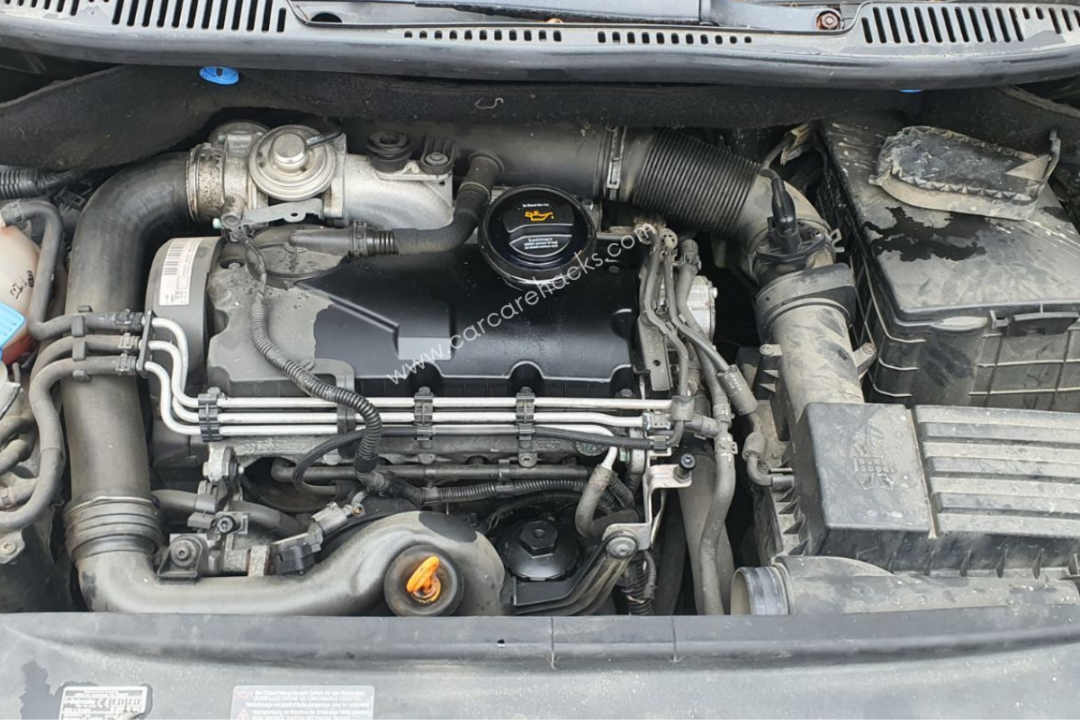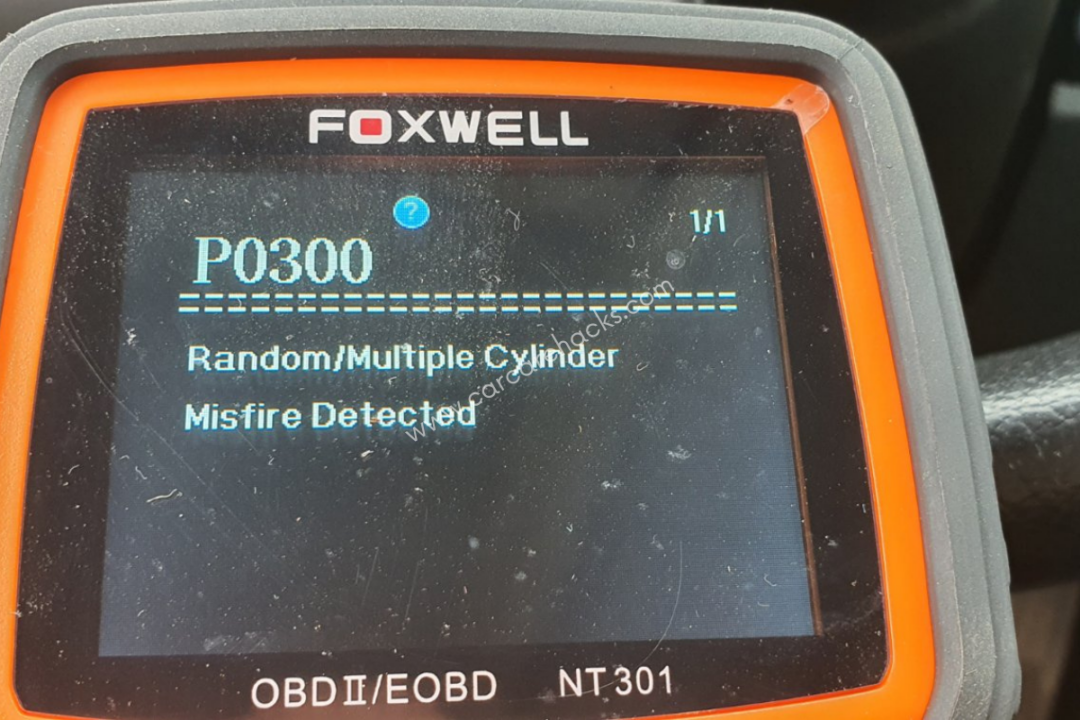The EGR valve is known for collecting grime due to recirculating the exhaust gases. This means that at some point in time, your EGR valve might become faulty.
It’s best if you know the symptoms of a faulty EGR valve and act accordingly. Sometimes, simply cleaning the EGR valve without removing it will do the job, sometimes it won’t.
- Key Takeaway
- How Does the EGR Valve Work?
- 9 Symptoms of a Faulty EGR Valve
- What Causes the Failure of an EGR Valve?
- FAQs
- Q: What is an EGR valve?
- Q: What causes the EGR valve to fail?
- Q: How does the EGR valve work?
- Q: What are the effects of a faulty EGR valve on engine performance?
- Q: Can a faulty EGR valve cause the engine to stall?
- Q: How can I diagnose a problem with the EGR valve?
- Q: What are some common signs of a failing EGR valve?
- Q: Can a faulty EGR valve be repaired?
- Q: How much does it cost to replace an EGR valve?
- In Conclusion
Key Takeaway
- Symptoms of a faulty EGR valve include a check engine light, failed emissions test, engine knock, lack of acceleration, rough idle, fuel smell around the car, bad fuel economy, black smoke from the tailpipe, or engine misfire.
- The EGR valve works by allowing a small percentage of exhaust gases to re-enter the intake system, altering the air’s chemical composition in the combustion chamber, thus reducing oxygen levels introducing inert gases to lower combustion temperatures, and minimizing the formation of harmful nitrogen oxides (NOx) emissions.
How Does the EGR Valve Work?
The Exhaust Gas Recirculation (EGR) valve plays a critical role in reducing harmful emissions and improving engine efficiency.
When the engine is operating, the EGR valve is closed during startup and idle times but opens during moderate to high-speed cruising.
The main function of the EGR valve is to allow a small portion of the exhaust gases, typically between 5% and 15%, to re-enter the intake system.
This changes the chemical composition of the air in the combustion chamber by reducing oxygen levels and introducing inert gases.
The result is a cooler combustion temperature which helps to reduce the formation of nitrogen oxides (NOx), a harmful emission.
9 Symptoms of a Faulty EGR Valve

- Check engine light
- Failed emissions test
- Engine knock
- Lack of acceleration
- Rough idle
- Fuel smell around the car
- Bad fuel economy
- Black smoke from the tailpipe
- Engine misfire
1. Check engine light

The easiest way to figure out if your EGR valve is faulty is by noticing your check engine light on. There are some codes related to a bad EGR valve: P0400, P0401, P0402, P0403, P0404, P0405, P0406, P0407, P0408, P0409.
You can read these codes with an OBD Scanner (see prices on amazon.com) or by going to the parts store near you and they’ll most likely do it for free.
2. Failed emissions test

If your car fails the emissions test, you most likely have a faulty EGR valve. This can be due to a stuck closed EGR valve. A stuck-closed EGR will prevent exhaust gases from coming into combustion.
If the exhaust gases don’t come in, the temperature inside the chamber will increase and produce more nitrogen oxide. Therefore, too much nitrogen oxide will fail your emissions test.
3. Engine knock

The third symptom you might be experiencing if your EGR valve has failed is engine knocking. Engine knocking is when an unplanned mini-detonation occurs during the power stroke in combustion. People describe it as a pinging noise.
A stuck-closed EGR prevents exhaust gases from coming inside of the combustion to cool it down for proper temperature levels. Hot temperature levels inside the combustion can ignite the air/fuel at unwanted times which creates your engine to knock.
4. Lack of acceleration
A lack of acceleration can be a clear sign that your EGR valve is faulty. A stuck open EGR valve can be the cause of this. A stuck-open EGR will continuously exhaust gases back into the combustion chamber.
These gases will take up space, therefore limiting the amount of air that needs to enter in order to achieve optimal engine performance. That is why your acceleration is lacking.
While accelerating, the engine needs more fresh air to get its peak performance. More exhaust gas instead of fresh air will also alter the fuel injection rates which will further decrease the performance reasonably. You can and should try to clean your EGR valve without removing it.
5. Rough idle

Another symptom of a faulty EGR valve is a rough idle. The reason for this is that the EGR is stuck open. It takes up space from the exhaust gases inside the combustion, therefore not leaving much room for air to combust efficiently with fuel. This leads to improper combustion which results in your car having vibrations and rough idle.
6. Fuel smell around the car
If the EGR is not functioning properly, the fuel inside cannot burn efficiently due to disturbed air-to-fuel ratios. This will emit more unburnt fuel into the exhaust thus making a pungent fuel loader. This symptom occurs mostly when the car is first started or when the engine is cold.
7. Bad fuel economy
A faulty EGR alters the combustion efficiency of the engine badly. You might even find yourself in a situation where you need to press more on the gas pedal than usual to go forward. This can make the overall efficiency of the engine go down and affects the gas mileage badly.
See more: Why Is My Car Wasting So Much Gas [9 Reasons]
8. Black smoke from the tailpipe

If your EGR valve is faulty, you might notice gray, dark, or black smoke coming out from the tailpipe. The reason for this is that when your EGR valve is faulty, it restricts the airflow to the engine. At this point, your engine is running rich which means it is burning more fuel than air.
The reason for this can be either a faulty EGR valve or just a clogged EGR valve. Before you replace your EGR valve, you should always try to clean the EGR without removing it.
9. Engine misfire

If your EGR valve is faulty, it can cause an engine misfire. There are two ways to diagnose this issue. The first one is to scan your vehicle with an OBD scanner and look for a P0300 – random misfire error code. The second one is to physically check the EGR valve and see if the gasket is broken or cracked. A simple crack can cause a vacuum leak.
The carbon deposits that accumulate in the valve will cause the valve to stay off of the seat and that will give the random misfire at an idle and create a drivability concern. If you check the EGR physically and notice some cracks, the replacement is in order says AutoZone.
What Causes the Failure of an EGR Valve?
- Carbon Build-up: Over time, carbon deposits from exhaust gases can build up on the valve and cause it to stick or not open and close properly.
- Mechanical Failure: The EGR valve is a mechanical device that can fail due to wear and tear or damage to its components.
- Electrical Issues: In systems where the EGR valve is controlled electronically, issues with the wiring or solenoid can cause the valve to malfunction.
- Engine Problems: Certain engine conditions, like a misfire or poor combustion, can lead to excessive exhaust gas temperatures which can damage the EGR valve.
- Contaminants and Debris: Dirt, grime, and other contaminants can get into the EGR valve and cause it to become clogged or fail.
- Faulty Vacuum Hose or Actuator: If the vacuum hose that controls the EGR valve is damaged, leaking, or blocked, it can prevent the valve from operating correctly. Similarly, a faulty actuator can also cause problems.
- Software Issues: In newer cars, the EGR valve is often controlled by the vehicle’s computer. Any software issues or glitches can affect its operation.
FAQs
Q: What is an EGR valve?
A: An EGR valve, short for Exhaust Gas Recirculation valve, is an important component of a vehicle’s emission control system. It helps reduce the emissions of nitrogen oxide (NOx) by recirculating a portion of the exhaust gases back into the combustion chamber.
Q: What causes the EGR valve to fail?
A: The most common cause of EGR valve failure is carbon deposits building up on its surface. This can prevent the valve from opening or closing properly, causing it to malfunction.
Q: How does the EGR valve work?
A: The EGR valve works by opening or closing to control the flow of exhaust gases into the intake manifold. It is either vacuum-operated or electronically controlled, depending on the vehicle’s design.
Q: What are the effects of a faulty EGR valve on engine performance?
A: A faulty EGR valve can negatively affect engine performance. It can cause rough idling, reduced fuel efficiency, decreased power and acceleration, and higher combustion temperatures.
Q: Can a faulty EGR valve cause the engine to stall?
A: Yes, a faulty EGR valve can cause the engine to stall, especially during idle or low-speed driving conditions. When the valve is stuck open or closed, it disrupts the air-fuel mixture, leading to stalling.
Q: How can I diagnose a problem with the EGR valve?
A: Diagnosing a faulty EGR valve can be done through a variety of methods, including using an OBD-II scanner to read trouble codes, conducting a visual inspection for carbon deposits, and performing a valve functionality test.
Q: What are some common signs of a failing EGR valve?
A: Common signs of a failing EGR valve include rough idle, decreased engine performance, increased emission levels, and the Check Engine Light illuminating.
Q: Can a faulty EGR valve be repaired?
A: In some cases, a faulty EGR valve can be cleaned or repaired to restore its functionality. However, in severe cases, it may need to be replaced with a new one.
Q: How much does it cost to replace an EGR valve?
A: The cost of replacing an EGR valve can vary depending on the vehicle make and model, as well as the labor rates of the repair shop. On average, it can cost anywhere from $150 to $500 for parts and labor.
In Conclusion
The symptoms of a faulty EGR valve can be quite varied, ranging from excessive engine noise and vibration to poor performance and fuel economy.
In some cases, the vehicle may even experience stall-outs or shut-offs.
By investing in regular maintenance such as turbo cleaning, you can help ensure that your EGR valve is functioning properly so it doesn’t negatively affect the performance of your vehicle.
